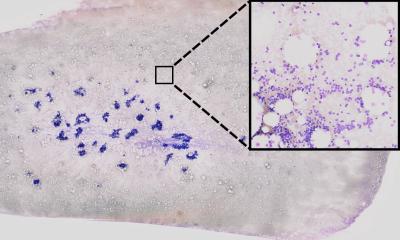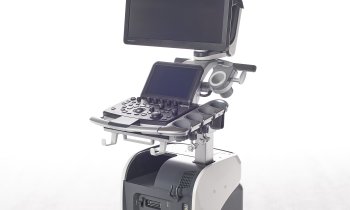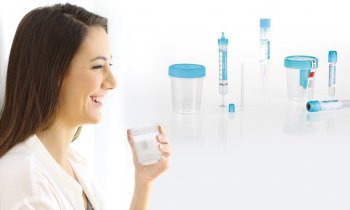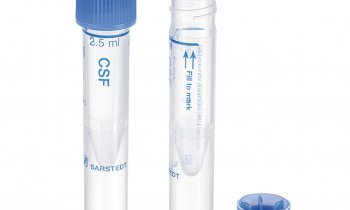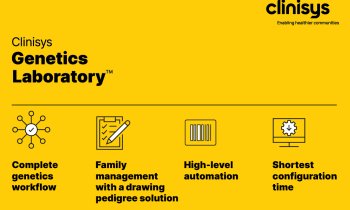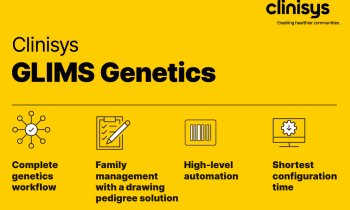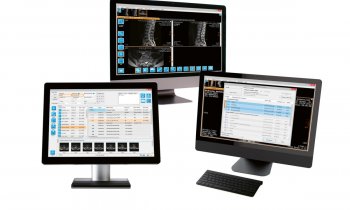Image source: Unsplash/Braňo
News • Whole genome sequencing
Rare disease diagnosis: the huge impact of WGS
Whole genome sequencing (WGS) from a single blood test picks up 31% more cases of rare genetic disorders than standard tests, shortening the ‘diagnostic odyssey’ that affected families experience, and providing huge opportunities for future research.
Mitochondrial disorders affect around 1 in 4,300 people and cause progressive, incurable diseases. They are amongst the most common inherited diseases but are difficult for clinicians to diagnose, not least because they can affect many different organs and resemble many other conditions. Current genetic testing regimes fail to diagnose around 40% of patients, with major implications for patients, their families and the health services they use. A new study, published in the BMJ, offers hope to families with no diagnosis, and endorses plans for the UK to establish a national diagnostic programme based on WGS to make more diagnoses faster.
We recommend that whole genome sequencing should be offered early and before invasive tests such as a muscle biopsy
Patrick Chinnery
While previous studies based on small, highly selected cohorts have suggested that WGS can identify mitochondrial disorders, this is the first to examine its effectiveness in a national healthcare system – the NHS. The study, led by researchers from the MRC Mitochondrial Biology Unit and Departments of Clinical Neuroscience and Medical Genetics at the University of Cambridge, involved 319 families with suspected mitochondrial disease recruited through the 100,000 Genomes Project which was set up to embed genomic testing in the NHS, discover new disease genes and make genetic diagnosis available for more patients.
In total, 345 participants – aged 0 to 92 with a median age of 25 years – had their whole genome sequenced. Through different analyses, the researchers found that they could make a definite or probable genetic diagnosis for 98 families (31%). Standard tests, which are often more invasive, failed to reach these diagnoses. Six possible diagnoses (2% of the 98 families) were made. A total of 95 different genes were implicated. Surprisingly, 62.5% of the diagnoses were actually non-mitochondrial disorders, with some having specific treatments. This happened because so many different diseases resemble mitochondrial disorders, making it very difficult to know which are which. Professor Patrick Chinnery from the MRC Mitochondrial Biology Unit and the Department of Clinical Neurosciences at the University of Cambridge, said: “We recommend that whole genome sequencing should be offered early and before invasive tests such as a muscle biopsy. All that patients would need to do is have a blood test, meaning that this could be offered across the whole country in an equitable way. People wouldn’t need to travel long distances to multiple appointments, and they would get their diagnosis much faster.”
Dr Katherine Schon from the MRC Mitochondrial Biology Unit and the Departments of Clinical Neuroscience and Medical Genetics, said: “A definitive genetic diagnosis can really help patients and their families, giving them access to tailored information about prognosis and treatment, genetic counselling and reproductive options including preimplantation genetic diagnosis or prenatal diagnosis.”
The researchers made 37.5% of their diagnoses in genes known to cause mitochondrial disease. These diagnoses were nearly all unique to a particular participant family, reflecting the genetic diversity found in these disorders. The impairment of mitochondrial function tends to affect tissues with high energy demand such as the brain, the peripheral nerves, the eye, the heart and the peripheral muscles. The study offers a valuable new resource for the discovery of future mitochondrial disease genes.
The majority of the team’s diagnoses (62.5%) were, however, of non-mitochondrial disorders which had features resembling mitochondrial diseases. These disorders would have been missed if the participants had only been investigated for mitochondrial disorders through muscle biopsy and/or a specific mitochondrial gene panel. These participants were living with a range of conditions including developmental disorders with intellectual disability, severe epileptic conditions and metabolic disorders, as well as heart and neurological diseases. Chinnery said: “These patients were referred because of a suspected mitochondrial disease and the conventional diagnostic tests are specifically for mitochondrial diseases. Unless you consider these other possibilities, you won't diagnose them. Whole genome sequencing isn’t restricted by that bias.”
A small number of newly diagnosed participants are already receiving treatments as a result. The team identified potentially treatable disorders in six participants with a mitochondrial disorder and nine with a non-mitochondrial disorder, but the impact of the treatments has yet to be determined. Chinnery said: “Diagnostic services are fragmented and unevenly distributed across the UK, and that creates major challenges for people with rare diseases and their families. By delivering a national programme based on this genome-wide approach, you can offer the same level of service to everyone."
Schon said: “If we can create a national platform of families with rare diseases, we can give them the opportunity to engage in clinical trials so we can get definitive evidence that new treatments work.”
The study points out that the relatively high number of patients with probable or possible diagnoses reflects the need for greater investment into the analysis of functional effects of new genetic variants which could be the cause of disease, but it is not certain at present. It also argues that rapid trio whole genome sequencing should be offered to all acutely unwell individuals with suspected mitochondrial disorders, so that results can help guide clinical management. Currently in the UK, this is only available for acutely unwell children. Dr Ellen Thomas, Clinical Director and Director of Quality at Genomics England, said: “We are very pleased to see significant research like this being enabled by data generously donated by participants of the 100,000 Genomes Project. It is clear from these results how their contributions to a rich and, importantly, secure dataset is critical in facilitating the genomic research that leads to insights like these that then have the potential to return value to the NHS and their patients. We look forward to seeing how these findings could support future care for patients with suspected mitochondrial disorders.”
Source: © University of Cambridge (CC BY 4.0)
04.11.2021



